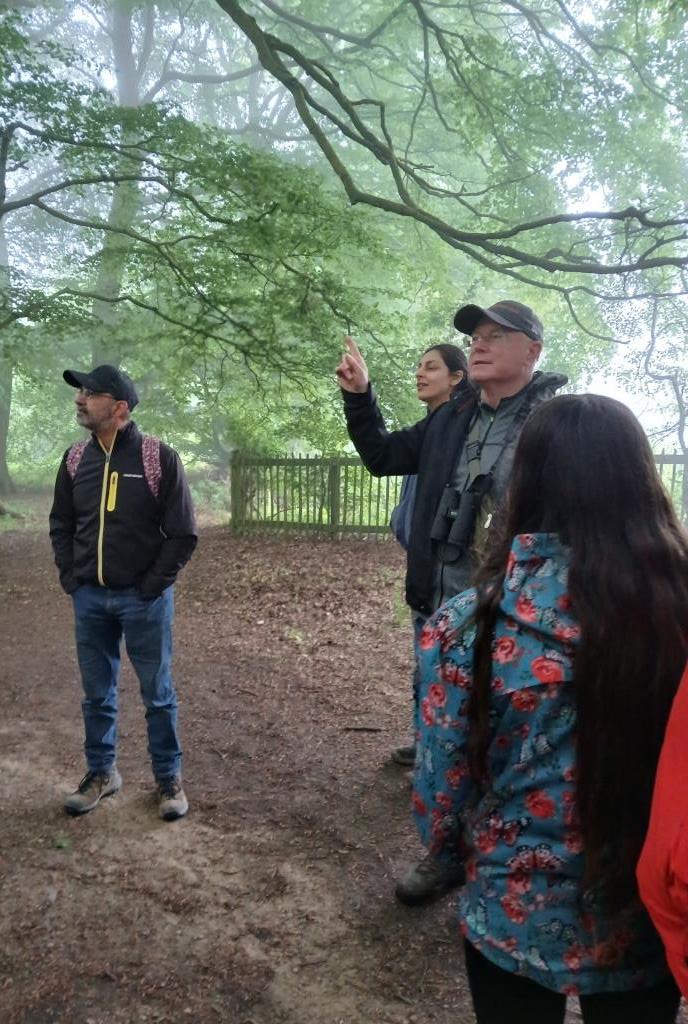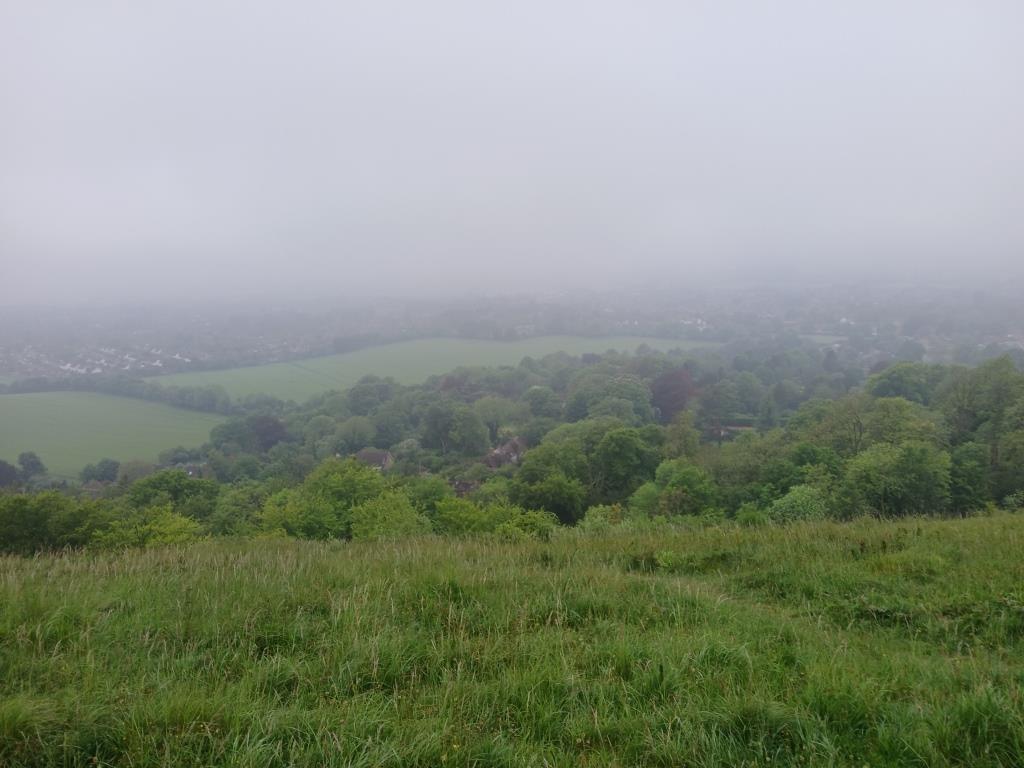It was more like November when I arrived at the Whiteleaf Cross car park above Monk’s Risborough in the Chilterns on Sunday morning, 19 May. There was a mist and it was cold. I had come for the Dadima‘s walk with Jon Mason, aka the Early Birder, to watch and listen to birds in the woods.
Jon has an engaging and amusing manner, describing the birds in ways to which one can relate. The wren, showing off with a song whenever it does anything, however small; the chiffchaff which clears its throat every so often (I hadn’t noticed this); the birds which mimic others to cause confusion.
We set off through the woods, hearing blackbird, robin and wren, and seeing a great tit at a nest box. A bit further on there was at least one singing garden warbler which I saw briefly.
We looked at the dying ash which is changing the woodland habitat, bringing in light and different flora.


Then we stood above the Whiteleaf Cross and stared into the mist.
Returning past the garden warbler we enjoyed some welcome refreshments in the car park, before crossing the road and making a circuit of Brush Hill. Here Jon pointed out the lesser celandine which had died down after flowering, and advised us not to pull it out of our gardens because it provides pollen early in the year, and then disappears. We stood listening to a song thrush and then caught sight of a tree creeper.
Jon pointed out pendulous sedge, woodruff, herb robert, and sanicle.



We went out onto the hillside where the mist was lifting.
In a month’s time the meadow will be worth another visit, because the cow parsley and buttercups will be replaced by a host of other wild flowers. We heard a blackcap.
Back in the wood, Jon stopped by a fine sycamore; they are often denigrated but will become increasingly important as we lose the ash. Also they attract aphids which provide valuable food for birds in an increasingly insect-depleted world.
We rounded a corner and came to a group from the Chiltern Society, which owns the wood, checking on nest boxes. They had just retrieved a great tit chick for ringing so we were able to photograph it before they popped it back. There were only two in the box which was a low number.
As we came back to the road at about 9.30 we heard a firecrest singing, a great finale to the walk. The sun was beginning to come out, but our misty walk had been something special.








I see a lot of garlic mustard in one of your photos. In the US it is labelled invasive. Is it in the UK?
No but there is a lot of it. It doesn’t seem to be a problem.
What a great blog. Very lucky to get a Firecrest. You also pick up on the crucial point of light – there is a huge problem for ancient woodland biodiversity from lack of management – wood getting darker and darker, birds like Nightingale dying out. It is a bitter irony that the tragedy of Ash die back is helping struggling woodland flowers
Thanks so much.